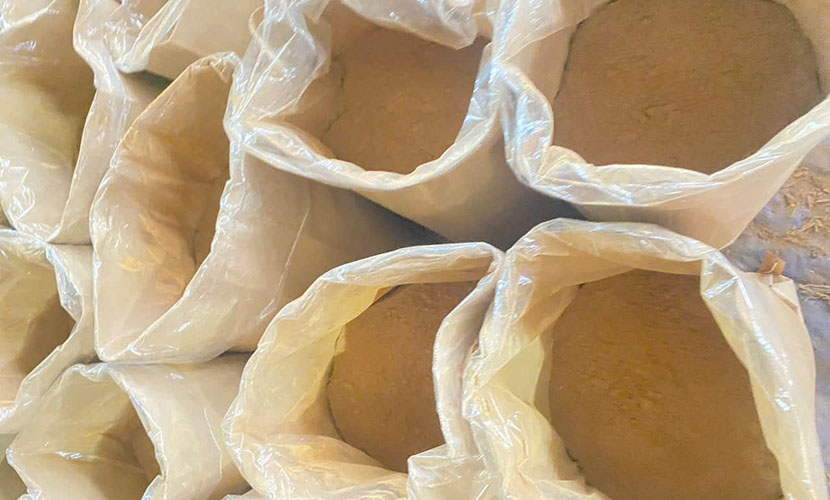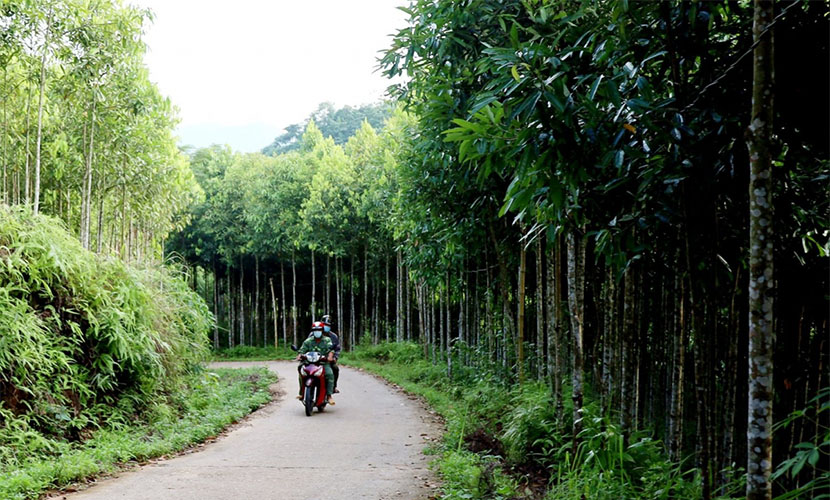
Lao Cai province started planting cinnamon trees nearly 50 years ago by the Dao ethnic people. To enhance the product quality, the province is developing Vietnamese organic cinnamon products nowadays.
To date, cinnamon trees have been available in 100 out of 152 communes, wards, and towns in the Lao Cai. Total cultivation area of cinnamon reached more than 53,300 hectares. Among these, the key cinnamon-growing area in the lowland districts of the province accounts for 48,582 hectares.
Revenue from cinnamon across the province reaches more than 600 billion VND per year. Lao Cai’s cinnamon area of over 48,000 hectares ranks second in the country (after Yen Bai). The average annual output of the entire province is 5,100 tons of dry cinnamon barks and 51,000 tons of branches and leaves.

Vietnamese organic cinnamon products
This figure will increase gradually in the coming years as more cinnamon trees reach harvesting ages. By 2030, about 4,000 hectares of cinnamon will be harvested annually in Lao Cai, excluding an average thinning harvest of 24,000 tons per year.
Through sampling and review, it has determined that the content and quality of Lao Cai cinnamon essential oil rank third nationwide. Currently, Lao Cai has a product chain that includes processed cinnamon bark into cinnamon sticks, rolled cinnamon, cinnamon powder, and cinnamon tubes.
However, most of these are at the intermediary level for exporting raw processed products. The cinnamon bark market has only recently reached India and China.
The development of the Lao Cai’s cinnamon raw material area basically links with a processing system consisting of 9 factories and one cooperative. The designed capacity of processing facilities ranges from 60 to 120 tons of cinnamon essential oil per year per factory.
The province’s annual cinnamon essential oil output is about 350-400 tons. In which, there are 85% of the essential oil for export to markets such as China, India, and Japan. A small portion of about 15% is for the domestic consumption. Basically, the development of the cinnamon value chain is still not commensurate with the local potential.

Vietnamese organic cinnamon powder
Cinnamon grows rapidly but it is scattered without proper planning. Several areas of plantation are outside the ecological zones, resulting in slow growth, poor quality, and low efficiency. The area Vietnamese organic cinnamon products remains low.
Processing mainly involves extracting cinnamon essential oil from branches and leaves. Meanwhile, the greatest value of cinnamon products comes from the barks, which businesses have not yet focused on investing. Current enterprises processing cinnamon products mainly extract essential oil from branches and leaves.
The product packaging is not attractive and does not meet market demand, especially for foreign markets. There are no leading enterprises with large-scale cinnamon product processing. To increase value, cinnamon products need to access high-end markets such as Japan, the United States, and the EU. To enter these markets, cinnamon products must have good quality and meet organic standards as required.
The government has identified the formation of concentrated cinnamon planting areas, focusing on commodity production, increasing added value, and sustainable development. The focus is on developing an organic cinnamon product chain under a national brand. It gradually expands to global markets and becoming a main agricultural and forestry export product.

Vietnamese organic cinnamon forest
In addtion, it links with developing raw material areas on a concentrated scale and production standards. The government is taking efforts to build the Lao Cai cinnamon brand, aiming for 30% of Vietnamese organic cinnamon products by 2025. By 2050, more than 50% of cinnamon products will be able to meet organic standards.
Lao Cai province has developed a plan for organic cinnamon areas. The goal is to sustainably develop the organic cinnamon raw material area. Also, it builds and expands production links with consumption markets, and enhance competitiveness.
At least 60 groups, cooperatives, and enterprises will be trained, with over 3,000 participants. These groups will sign cooperation agreements with cooperatives and enterprises for evaluation, organic cinnamon certification, and product consumption.
To implement the above plan, solutions include propaganda and mobilization to help people understand the benefits and effectiveness of organic cinnamon development. Organic certificates will be the first priority, including registration by age class and feasibility for certification, certificate maintenance, and traceability.
Mobilization to form cinnamon production groups and create links between people, groups, cooperatives, and enterprises. In addition, the prrovince should mobilize the social capital for investment, assessment, and issuance of organic certificates. The ultimate goal is the sustainable development of Lao Cai’s organic cinnamon areas.
Vietnamese source: https://nongnghiephuuco.vn/lao-cai-tap-trung-phat-trien-vung-que-huu-co-3350.html
